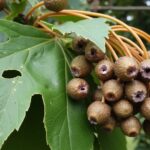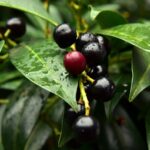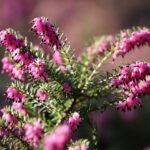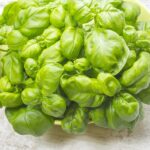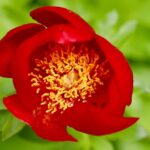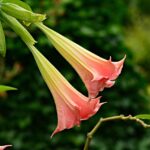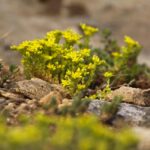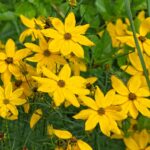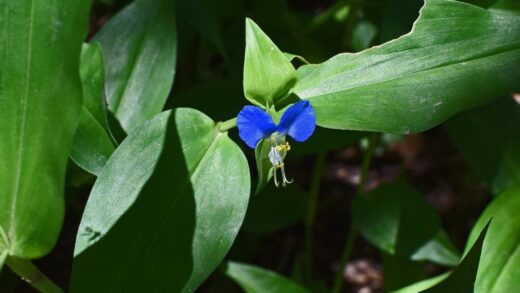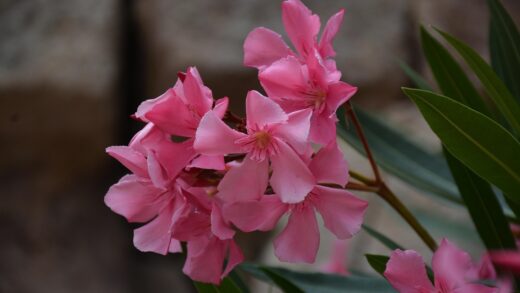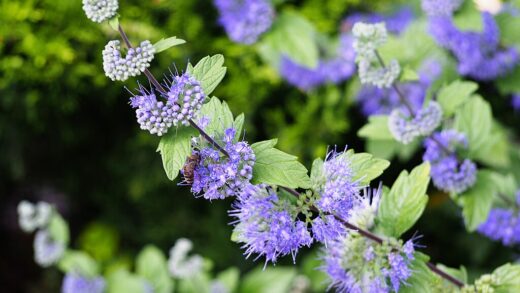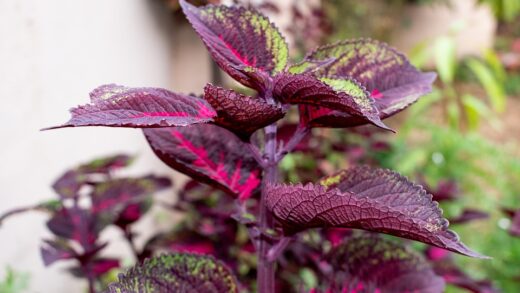The interplay of light and shadow is at the very heart of the Japanese maple’s aesthetic appeal. The quality and duration of sunlight a tree receives directly influences not only its overall health and vigor but also the intensity and richness of its celebrated foliage color. While often thought of as shade trees, their light requirements are more nuanced; they need a delicate balance, a specific recipe of sun and protection, to truly flourish. Providing too much sun can lead to scorched, faded leaves, while too little can result in lackluster color and sparse growth. Understanding how to harness the light in your garden is therefore one of the most crucial skills for cultivating a vibrant and breathtaking Japanese maple.
The ideal balance of sun and shade
Japanese maples are naturally understory trees, meaning that in their native habitats, they grow in the dappled light beneath the canopy of larger forest trees. This evolutionary background is the key to understanding their light preferences. They thrive in conditions that mimic this environment: a location that receives gentle morning sun and is then protected from the harsh, intense heat of the direct afternoon sun. The morning sun provides enough light energy for the tree to photosynthesize effectively and develop the best leaf coloration, while the afternoon shade prevents the delicate leaves from burning and stressing the tree.
This “morning sun, afternoon shade” rule is the gold standard for siting a Japanese maple, especially in climates with hot summers. A location on the east side of a house, where it is shaded from the midday and afternoon sun, is often perfect. Alternatively, planting it underneath the high, filtered canopy of a large deciduous tree, like an oak or a locust, can beautifully replicate its natural woodland setting. The key is to avoid locations where the tree will be blasted by relentless, direct sun from noon until late afternoon, as this is the most common cause of leaf scorch.
The consequences of getting the light balance wrong are quite visible. A tree that receives too much direct sun, particularly afternoon sun, will develop leaf scorch. This appears as brown, crispy margins on the leaves, and in severe cases, the entire leaf can turn brown and shrivel. The vibrant colors of red-leafed varieties can also “bronze out” or fade to a dull, muddy green in excessive sun. The tree becomes stressed as it loses water through its leaves faster than its roots can absorb it, leading to a weakened state that makes it more susceptible to pests and diseases.
Conversely, a Japanese maple planted in deep, dense shade will also fail to thrive. While it may survive, it will likely have a weak, spindly growth habit as it stretches towards any available light. The foliage may be sparse, and most importantly, the color will be significantly diminished. Red and purple cultivars may revert to green or a dull bronze, and variegated varieties will lose their distinct patterns. The tree needs a certain amount of direct or bright, filtered light to produce the pigments (anthocyanins) that create the stunning red and purple hues for which they are famous.
Light requirements for different cultivars
While the general rule of morning sun and afternoon shade holds true for most varieties, it is important to recognize that the vast world of Japanese maple cultivars contains a spectrum of light tolerances. The color of the leaf is often a good indicator of its sun tolerance. As a general rule, green-leafed varieties of Acer palmatum are the most adaptable and can handle more direct sun than their red or variegated counterparts. Cultivars like ‘Sango-kaku’ (Coral Bark Maple) or the species itself can often tolerate full sun conditions, provided they receive adequate moisture.
Red and purple-leafed cultivars, such as the popular ‘Bloodgood’ or ‘Emperor I’, require more protection from the afternoon sun to maintain their deep, rich coloring. While they need some direct sun to develop these dark pigments, excessive sun will cause the leaves to scorch and fade. ‘Emperor I’ is known to be slightly more sun-tolerant than ‘Bloodgood’, as its leaves emerge a bit later in the spring, avoiding some of the early temperature fluctuations. However, even these robust varieties will look their best with some afternoon shade in hotter climates.
The most sensitive and shade-demanding Japanese maples are the variegated and golden-leaved varieties. Cultivars like ‘Butterfly’ with its white and pink-edged leaves, or ‘Ukigumo’ (Floating Clouds) with its white-splashed foliage, have less chlorophyll in their leaves. This makes them extremely susceptible to burning in direct sun. These delicate beauties absolutely require a location with bright, filtered light or only a couple of hours of very gentle morning sun. Similarly, golden or chartreuse varieties like ‘Katsura’ or ‘Aureum’ will scorch easily and must be protected from direct sun to prevent their brilliant foliage from turning brown.
The dissected-leaf or “laceleaf” varieties, often referred to as Acer palmatum var. dissectum, also tend to be more sensitive to sun and wind due to the fine texture of their leaves. Whether they are green (‘Viridis’) or red (‘Crimson Queen’, ‘Tamukeyama’), their delicate, deeply cut leaves have more surface area relative to their volume, causing them to lose moisture more rapidly. For these weeping, finely textured maples, a location with dappled light or morning sun only is almost always essential to prevent the leaves from becoming crispy and tattered by mid-summer.
Seasonal changes and light exposure
The angle and intensity of the sun change dramatically throughout the year, and this can affect the light conditions in your garden. A spot that is perfectly shady in the summer when the sun is high in the sky might receive much more direct sun in the spring or fall when the sun is at a lower angle. It is important to observe the light patterns in your chosen location throughout the different seasons before you plant. This will give you a more complete picture of the conditions your tree will experience year-round.
In the spring, as the tender new leaves are emerging, they are at their most vulnerable. A late spring heatwave combined with direct sun can easily scorch this new foliage. This is another reason why a location with morning sun is so beneficial, as it allows the leaves to gradually acclimate to the increasing light intensity of the growing season. In the autumn, the lower angle of the sun can actually enhance the tree’s fall color, illuminating the leaves and making them appear to glow from within.
The presence of surrounding deciduous trees also creates a dynamic light environment. In the early spring, your Japanese maple might receive full sun before the larger trees have leafed out. This early sun can be beneficial, warming the soil and encouraging the maple to break dormancy. By the time the summer sun reaches its peak intensity, the canopy of the larger trees will have filled in, providing the necessary shade and protection. This natural, seasonal modulation of light is the ideal scenario for a Japanese maple.
During the winter, when the Japanese maple is dormant and has no leaves, sunlight is less of a concern for the canopy. However, as previously discussed, the low winter sun can still cause problems for the tree’s trunk. Sunscald is a direct result of the bark being warmed by the winter sun. This highlights the fact that you must consider the effects of sunlight on your tree not just during the growing season, but throughout the entire year, from the most delicate leaf tip to the bark on the main trunk.
Recognizing and troubleshooting light-related issues
The most common light-related problem for Japanese maples is leaf scorch. This is an unmistakable sign of too much sun or heat stress. The edges of the leaves will turn brown and dry, feeling crispy to the touch. The damage often appears first on the parts of the tree most exposed to the afternoon sun. If you see signs of leaf scorch, it is a clear indication that the tree is in a stressful situation. While you cannot repair the scorched leaves, you can take steps to prevent further damage. Ensuring the tree is deeply and consistently watered during hot periods can help, but the long-term solution may involve transplanting the tree to a more suitable, shadier location.
On the opposite end of the spectrum, a tree in too much shade will give you different signals. The primary symptom is poor coloration. A ‘Bloodgood’ maple that should be a deep burgundy might instead be a dull, muddy green-bronze. The growth will likely be weak and elongated, a condition known as etiolation, as the branches stretch out in search of more light. The overall form of the tree will be sparse and less dense than a specimen grown in adequate light. If you observe these signs, you should look for ways to increase the light reaching the tree, perhaps by thinning the canopy of an overhanging tree or moving the maple to a brighter location.
Sometimes, what appears to be a light issue is actually a combination of factors. For example, leaf scorch can be caused by too much sun, but it can also be severely exacerbated by insufficient watering or by hot, drying winds. A tree might be perfectly happy in a full-sun location in a cool, coastal climate with high humidity, but that same tree would scorch badly in a hot, dry, windy inland climate. It is important to look at the whole picture—sun, water, wind, and soil—when diagnosing a problem with your tree.
If your tree is already planted in a location that is too sunny and transplanting it is not a viable option, you may have to find creative ways to provide it with more shade. In the short term, you could erect a temporary shade cloth structure over the tree during the hottest part of the summer. A more permanent solution could involve planting a larger, faster-growing tree or shrub nearby that will eventually cast the needed afternoon shade. Thinking strategically about how plants interact and create microclimates is a key skill in advanced garden design.

